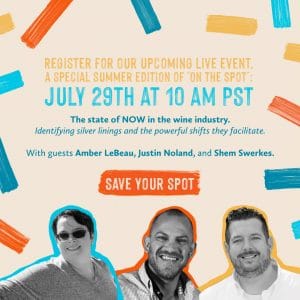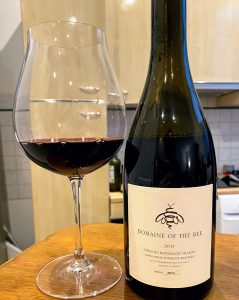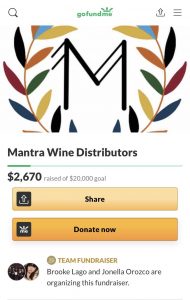While the present is still grim in some areas (such as South Africa), many wine regions have open up their tasting rooms even in a limited, socially distant capacity. That’s been sure relief for cash-strapped wineries and a welcome respite for wine lovers who need to digitally detox. (Provided they feel safe and welcomed.)

But make no mistake. There is still a lot of value and a healthy market for online wine events. The folks that have gotten used to finding wine edu-tainment from the comforts of their couch aren’t melting away in the summer heat.
Since launching VirtualWineEvent.com in early May, I expected things to get quieter as places opened back up. But if you’ve been wondering why I haven’t been writing as much, I can tell you that those expectations didn’t play out. Running VWE is turning into a full-time job with managing listings as well as counseling wine businesses about their events. (Though we’re still committed to keeping this as a free resource for the wine industry.)
Now I will say that the number of online wine events featured on the site each day has certainly decreased from a high point of 60-70+ a day in May/June to about 30 to 40 a day. (Though, to be frank, that high point was a bit much.) However, our site traffic keeps rolling on. A big reason, I suspect, is that even though the number of events have gone down, the overall quality has gone up.
Sure, there’s still the smattering of sucky virtual tastings.
But the number is much lower as those wineries putting on those lackluster events likely didn’t see many results for their efforts. Maybe they had a little bump in the first few weeks but probably soon saw attendance and enthusiasm fizzle. However, the wineries, wine shops, educators and influencers that got it–that figured out how the game was to be played–are the ones we see still investing and putting out quality online wine events.
Now, of course, there isn’t a magical formula. However, there are definitely some common threads that have emerged. First among them was the initial approach. As I told Jess Landers of SevenFiftyDaily in her article, How Wine Brands Can Successfully Utilize Virtual Tastings to Drive Consumer Sales, trying to replicate the tasting room experience virtually is a nonstarter. Those who tried usually failed spectacularly.
The wineries that viewed virtual tastings as nothing more than a revenue stopgap were always thinking too small and too limited. Meanwhile, other wineries, like Ridge Vineyards and the many who have partnered with 67 Pall Mall, approached these events as brand-building opportunities instead of wannabe tasting room experiences. These are the folks who nailed it from the get-go and will continue to see results.
Tomorrow, I’ll be talking about this and more as part of Outshinery’s On the Spot – The State of NOW in the Wine Industry panel.

You can save your spot for the event here.
I encourage my readers to save a spot and join us at 10 am PST/1 pm EST. I’ll be sharing many of the insights that I’ve learned from managing VWE.
I’m not going to give them all away here, but I’ll leave you with this thought.
In a crowded marketplace, you can’t always rely on impulse driving a sale. Think of a label or bulk stack catching a consumer’s eyes. The sign on the road saying “Tasting Room Open.” That interesting name and just right price on the wine list. All the things that we used to rely on encouraging a wine lover to give you a shot.
As the COVID shutdown has shown us, relying on impulse is tenuous. Instead, you need to drive intent. You need to give consumers a reason to look for your wines, to want to go to your tasting room or visit your website and social media.
The ease and global reach of digital video is a powerful seed planter and intent driver. The future of virtual wine events belongs to the wineries and wine businesses that understand this.
And that future is now.




